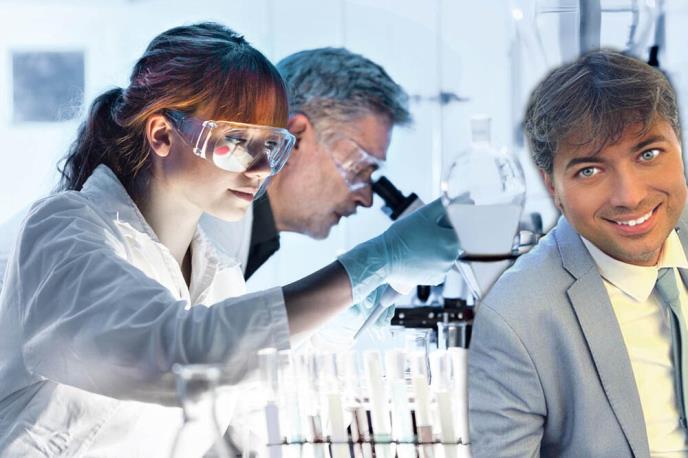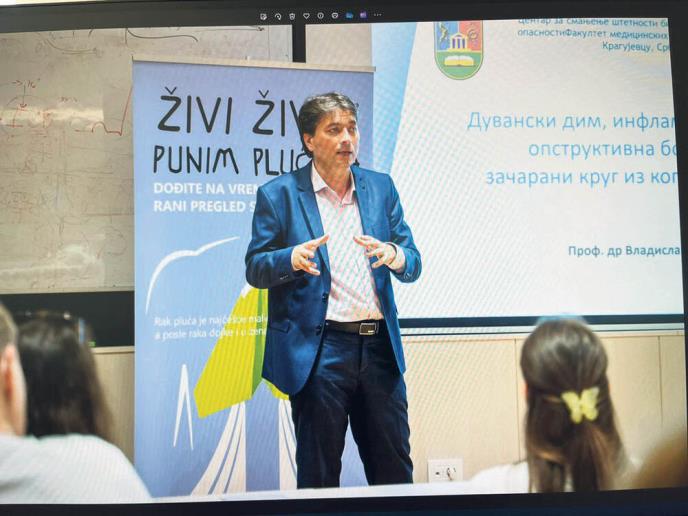HE RETURNED FROM SWITZERLAND TO SERBIA: ‘We Will Heal Ourselves with Stem Cells, and When My 3 Sons...’

SOCIETY
He is the third most cited scientist in the world in his field, to the pride of all Serbia. But more importantly, as he points out, what he aims to achieve in the next three to five years, or maybe even sooner, should bring benefits to our patients. This is treatment with one’s own stem cells tailored to each patient! This is the future that Professor Vladislav Volarević (45) is working on.
A native of Niš, who graduated in medicine in his hometown and earned his doctorate in Kragujevac, he trained at the Curie Institute in Paris, then at the famous Mount Sinai clinic in New York, had a good job in Switzerland, a great salary... One could say he had everything. But he missed something, something uniquely ours... That’s why he definitively returned to Kragujevac at the end of 2019, where he conducted most of his research, because in Serbia today, as he points out, significant funds are invested in science. Besides two chairs at the Faculty of Medical Sciences - for Medical Genetics and for Microbiology and Immunology, where he teaches, he also has numerous projects abroad. And he lives quite well in Serbia.


PROFESSOR VLADISLAV VOLAREVIĆ, PHOTO CREDIT: PRIVATE ARCHIVE
“I really feel best in Serbia, I am truly at home here. Yes, the earnings there and here cannot be compared, but I am happiest when I see my three sons going to the school I attended, speaking Serbian,” Prof Volarević tells Kurir.
A special incentive for returning to Serbia is the construction of the Centre of Excellence at the Faculty of Medical Sciences in Kragujevac, which will house the first national stem cell bank and a research centre. The building is already constructed, equipment is arriving, and the team consists of about 30 experts. This is important because Prof Volarević is the third most cited globally for papers on mesenchymal stem cells, and 22nd overall in the field of stem cells. It sounds complicated, especially the former, so to start with - what are mesenchymal stem cells?
“First, let’s explain that stem cells can be taken from embryos, but there are many ethical dilemmas since isolating them essentially kills the embryo. Therefore, they are sidelined in research. Also, every organ in the body has adult stem cells, which are few and hidden in niches, from where they are activated when, for instance, you injure that organ or during inflammation to renew the tissue. They have the ability to self-renew and almost uncontrolled division. Mesenchymal stem cells are a type of adult stem cells present in all tissues and organs, in their niches, and are most commonly isolated from adipose tissue, dental pulp, and bone marrow (not to be confused with hematopoietic stem cells, which are mainly used for treating blood diseases). They can spontaneously regenerate cartilage, bone, and adipose tissue and are the only stem cells with strong immunomodulatory effects - the factors they secrete can be used to reduce inflammation in various diseases,” explains Prof Volarević, adding that the team of experts from Kragujevac was the first in the world to show in animals that the application of these factors significantly reduces the progression of fulminant, i.e., rapidly progressing hepatitis.
SMOKING ROBOTS
Prof Volarević also mentions that they have formed a Centre for the Reduction of Harm from Biological and Chemical Hazards, for which they received a grant from the USA, comparing the effects of using conventional and electronic cigarettes.
“We have equipment unique in this part of Europe, we call them smoking robots. These are machines where you can program conventional or electronic cigarettes with the desired dynamics. We connect them to cell lines and observe how they affect the cells, and we do the same on experimental animals. We are networked with seven laboratories worldwide and conduct concentric studies, repeating the same experiment under identical conditions,” says the professor, adding that they will also investigate the impact of micro and nano-plastics on human health, as well as the harmful effects of other air and soil pollutants.
CLINICAL DIAGNOSTICS
They plan to develop clinical diagnostics within the Centre of Excellence.
“We have the latest generation flow cytometer, used for detecting the phenotype and function of immune cells in the body. It is networked with all similar cytometers in Europe, so we plan to work on sensitivity to different allergens, everything done in haematology like leukaemia, lymphomas...” says Prof Volarević.
The Centre of Excellence should provide a secure base for all this research, and also pioneer clinical research with stem cells. What benefits could this have for patients?
“When you visit a doctor and have, for example, a heart problem, they will give you a drug that they give to almost everyone. We plan to enable so-called patient-specific therapy, tailored to the individual, by obtaining so-called induced pluripotent stem cells. These are obtained from any of your cells, most often from fibroblasts - skin cells. We take a small piece of your skin, isolate the fibroblast, then use various factors to rewind its biological clock, essentially creating a pluripotent stem cell (similar to an embryonic one), which can differentiate into any cell. All these factors secreted by stem cells, which are packed into tiny vesicles (exosomes), are actually introduced to patients and used as a medicine that will work best. So, if you have a heart problem, we will create your cardiomyocyte, which is unique. This is already known in the world, and we know how to do it ourselves,” explains Prof Volarević, adding:
PROFESSOR VLADISLAV VOLAREVIĆ, PHOTO CREDIT: PRIVATE ARCHIVE
“And such an induced pluripotent stem cell can be frozen, and tomorrow, if your nervous system, for example, becomes diseased, we will thaw it and create a nerve cell, then test drugs on it.”
This, Prof Volarević claims, is not so far off:
“If the Centre develops as I see it developing, this could come to life in three to five years, or maybe even sooner!”
Jelena S. Spasić
It is prohibited to take parts or the entire text and/or photos/videos without citing and linking the source and author, in accordance with the provisions of WMG Terms of Use and the Law on Public Information and Media